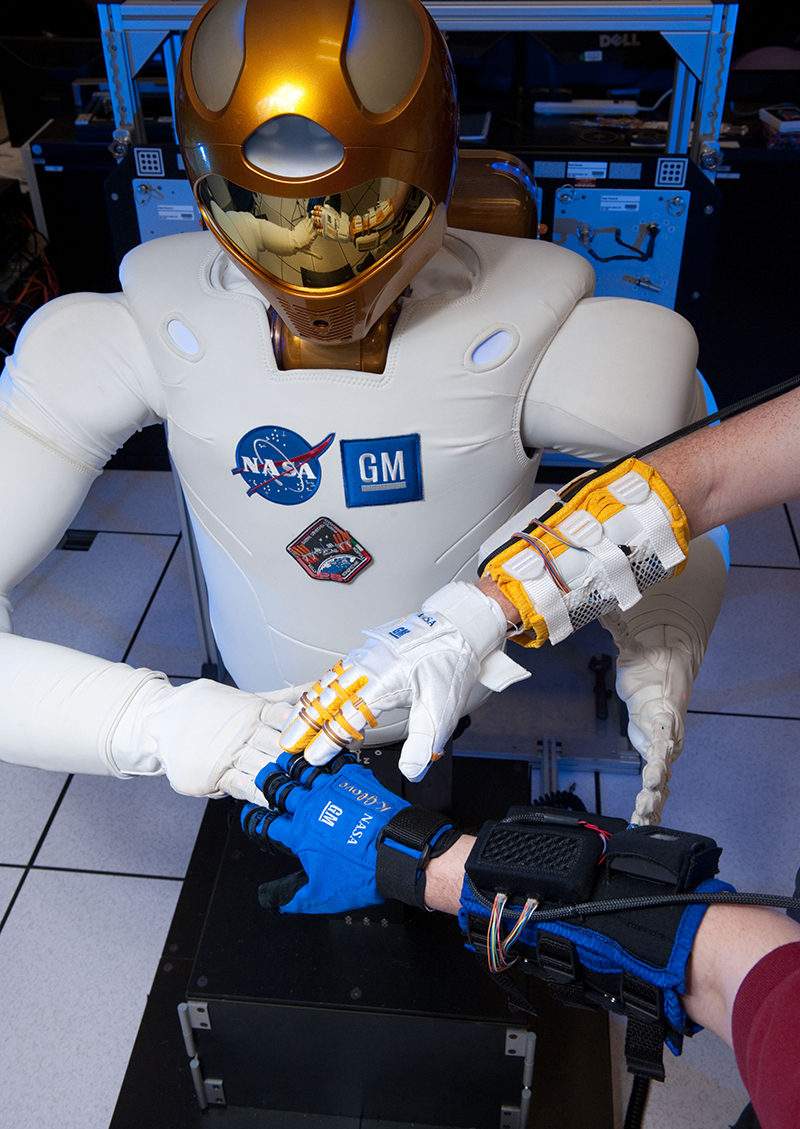
NASA’s Robotic Glove Finds Commercial Handhold
Subheadline
Grip-strengthening glove based on robotic astronaut assistant aims to reduce workplace stress injuries
It’s no coincidence that our most complex, versatile, and useful body part, the human hand, is also among the most prone to injury. With its fine motor and sensory coordination, delicacy, and strength, the hand also sets a standard for robotics engineers to strive for, being supremely useful and still impossible to replicate.
A person, for example, can effortlessly reach a hand into a pocket and fish out a dime from among a multitude of other coins and little objects, a feat no robot can match, noted Jonathan Rogers, a mechanical design engineer at NASA’s Johnson Space Center in Houston. “The human hand and forearm is a marvel of capability for its size.”
So it’s no surprise that one of the biggest obstacles to creating the first robot astronaut to fly in space was building its hands. Nor is it surprising that the hands were the first aspect of the robot to be commercialized. Factory workers around the globe are now trying out Ironhand, a robotic glove designed to help them perform repetitive tasks without fatigue or injury. There’s nothing else like it on the market.
Robots Can Lend Astronauts, Auto Workers a Hand
The world’s first industrial-strength robotic glove only exists because NASA and General Motors (GM) realized that space exploration and automobile manufacturing had a lot of common goals. The first was a need for robots and humans to work side-by-side, so they signed a 2006 Space Act Agreement for the construction of Robonaut 2 (R2). This was a faster, more dexterous follow-up to the earlier Robonaut prototype built by NASA and the Defense Advanced Research Projects Agency.
The partnership brought half a dozen GM engineers to Johnson, where they helped design and build the robot that flew to the International Space Station five years later and proved it could perform simple tasks alongside astronauts.
With that work completed, the team “recognized that we could repackage the finger actuator drive train into a wearable device” that could help both astronauts and auto workers, Rogers said.
Automobile factory employees can become fatigued from performing repetitive tasks, leading to quality control problems and, worse, injuries, Rogers said. These days, partly because robots already do much of the heavy lifting, stress injuries among factory workers are more common in the hands than, for example, the lower back or shoulders.
Likewise, hand fatigue has long plagued astronauts working on the outside of spacecraft. In the vacuum of space, an astronaut’s suit, including the gloves, becomes a pressurized balloon, stiff and difficult to bend, Rogers said. So extended work in space can lead to aches and raw spots on the hands and even delaminated fingernails in worst-case scenarios.
The team understood that a glove could provide grasping strength to solve both problems. So once an R2 model was safely aboard the space station, the NASA and GM team started building robotic gloves based on the hardware in the robot’s hands and forearms. For the space agency, having a partner that could both provide an industry perspective and help secure patents was a big help, Rogers said.
Glove Technology Finds Its Fit
By 2015, GM workers were trying out prototypes known as Robo-Glove. The company began looking for a commercial partner to further refine the technology and found that Robo-Glove was not the world’s first robotic grip-strengthening glove. Two years earlier, the company Bioservo Technologies of Stockholm, Sweden, had released its Soft Extra Muscle (SEM) glove, intended to compensate for hand injuries.
“They eventually chose us because no one else had a similar product on the market,” said Martin Wahlstedt, development director at Bioservo. The Stockholm-based company licensed six Robo-Glove patents from NASA and GM and got to work, with GM testing prototypes as they were built.
“Because we were a medical device company, we had to learn a lot about industrial applications,” said Mikael Wester, the company’s marketing director.
By 2018, other partners were testing the first release of Bioservo’s Ironhand, including Airbus, General Electric, and the French construction and infrastructure giant Eiffage. Based on feedback, the company refined its Ironhand 1.6, released in 2020, when it was named NASA Commercial Invention of the Year, along with Robo-Glove.
Most Ironhand sales are still for trial runs, but the company is planning a larger commercial rollout. Two companies, Rhino Assembly Corporation and Alpha Quantix, have signed on to distribute the device to U.S. manufacturers. Other partners are distributing it in Europe.
Wester said feedback from users has been overwhelmingly positive, especially from those with preexisting hand injuries, and Wahlstedt said some workers have reported that they were able to stop using pain medication.
“We have users who don’t want to let go of it after the trial,” Wester said.
While robotic exoskeleton devices have emerged as a field in the last five years or so, this is still a new frontier, said Wahlstedt, and no one else has put out an industrial grip-strengthening glove, not least because it’s a difficult engineering feat. “A traditional approach with beams and hard structures can’t be applied to the hand. The hand is very complex in its anatomy, and how you use it is also complex and varied.”
The company, which started in 2006 with a neurosurgeon and a mechatronics professor who initially wanted to help patients with limited hand functionality, now has two commercial products – Ironhand, for industrial use, and Carbonhand, for medical use. In the last two years, its workforce has grown from eight to 28 employees, largely jumpstarted by the Robo-Glove collaboration with GM, said Wahlstedt.
The Next Robots for Earth and Space
Meanwhile, after NASA’s partnership with GM ended, Rogers, now deputy chief for Johnson’s Robotic Systems Technology Branch, led a two-year effort to adapt the technology for spacesuit gloves, leading to two pending patents the agency plans to offer to Bioservo. “It’s a huge win that came out of the glove,” he said. “Any technology NASA comes up with that benefits society as a whole is a return on taxpayers’ investment.”
Johnson engineers are now building on technology from R2 and Robo-Glove with another commercial partner, an Australian natural gas company interested in deploying robots for dull, dirty, or dangerous field jobs. NASA plans to use advances made under the project for robots to maintain the planned lunar Gateway outpost, which will only intermittently house astronaut crews.
Code written for motor control, manipulation, and autonomy can be applied to a variety of robots, noted Rogers. “Those core enabling technologies can be carried over from R2 to whatever we come up with.”
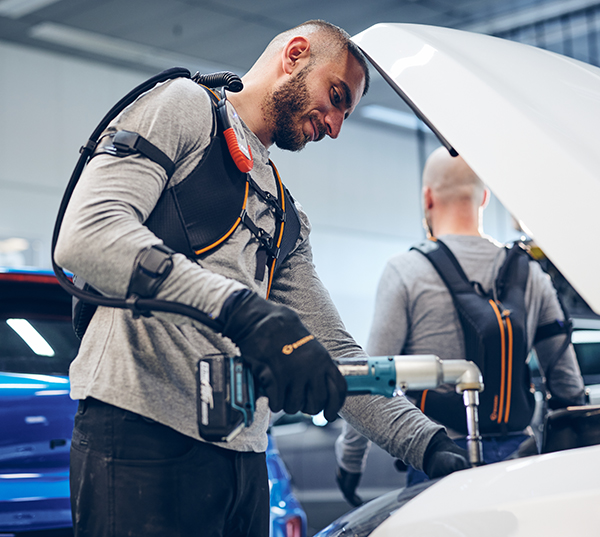
Swedish company Bioservo Technologies’ Ironhand, based on a set of patents from NASA and General Motors' (GM) Robo-Glove, is the world’s first industrial-strength robotic glove for factory workers and others who perform repetitive manual tasks. Credit: Bioservo Technologies/Niklas Lagström
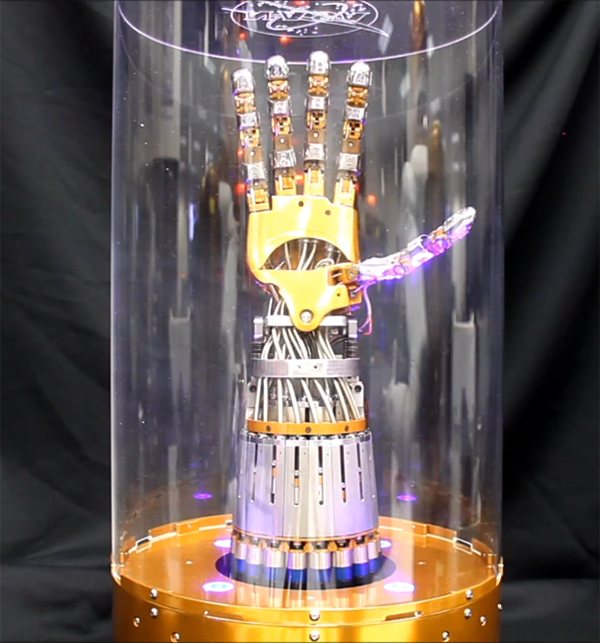
After building the hands for Robonaut 2, both NASA and GM saw potential uses for a robotic glove based on the same hardware. While the automobile manufacturer saw the potential to reduce repetitive stress injuries on factory floors, the space agency’s astronauts have always had difficulty using pressurized gloves in space for extended periods. Credit: NASA
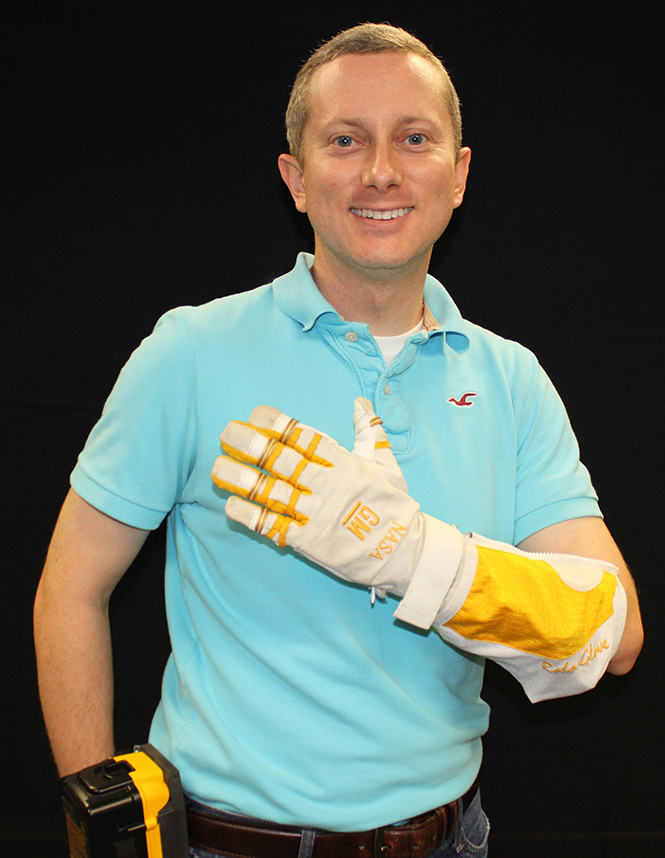
Jonathan Rogers, now deputy chief of the Robotic Systems Technology Branch at Johnson Space Center, worked with a team of Johnson and GM engineers to build Robo-Glove, a robotic glove that could help manufacturing workers and astronauts alike. Credit: NASA
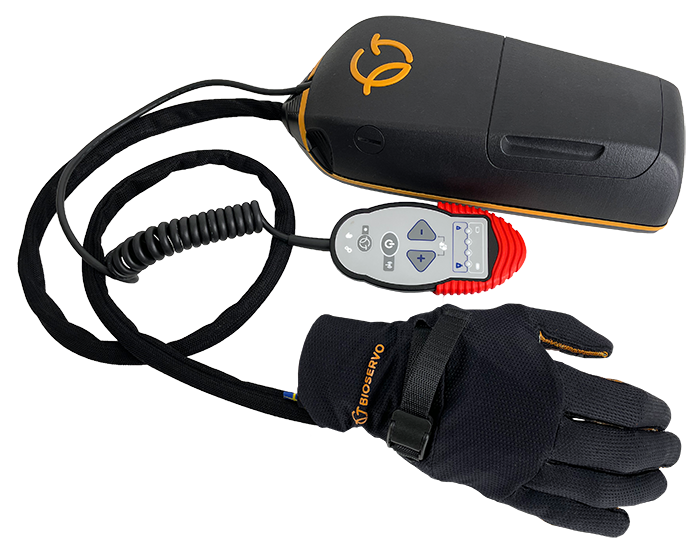
Bioservo Technologies released the second version of its industrial robotic glove, Ironhand 2.0, in June of 2021. The glove connects to a power pack worn in a backpack or hip-carry. Credit: Bioservo Technologies/Niklas Lagström
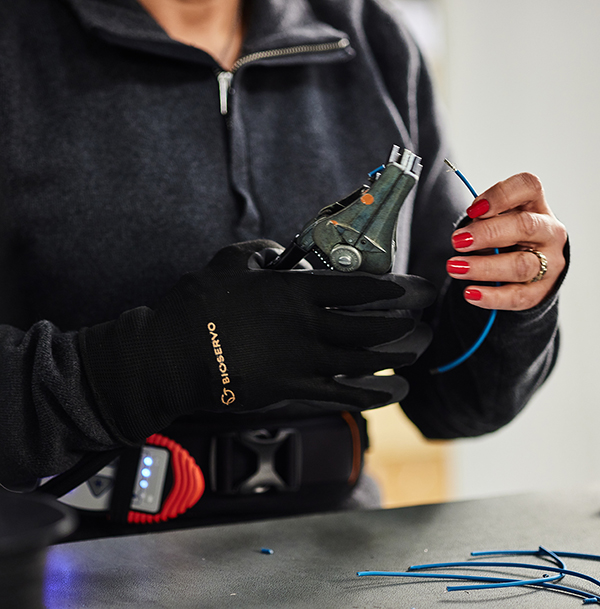
The Ironhand glove adds force to the user’s grip with artificial tendons and pressure sensors on the palm and in the fingers. This reduces strain on the user’s own tendons and muscles, decreasing the risk of injury from repetitive, grip-intensive tasks. Credit: Bioservo Technologies/Niklas Lagström
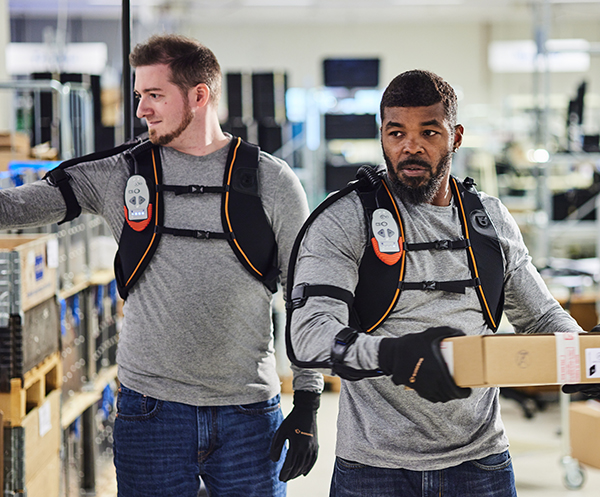
Musculoskeletal disorders are among the most common occupational injuries, with most of them in the arms and hands, and they’re a major cause of long-term sick leave. Ironhand was created to both reduce these injuries and help workers recovering from them. Credit: Bioservo Technologies/Niklas Lagström
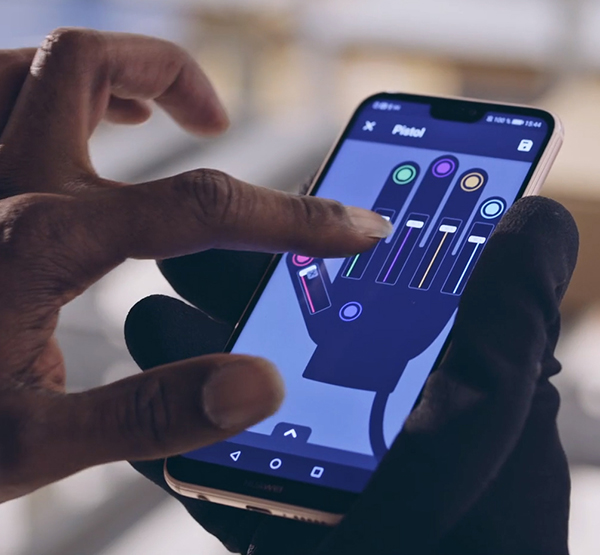
The Ironhand glove can be adjusted to user preferences and task-specific motions, with combinations of force, sensitivity, finger balance, and locking tendency saved as profiles and controlled with the IronConnect Pro app, shown here, or a remote control worn on the chest. Credit: Bioservo Technologies/Niklas Lagström

The design and construction of Robonaut 2, a cooperative effort between NASA and GM, led the two partners to follow the project with a robotic glove based on the hardware they created for the robot astronaut’s hands. Credit: NASA













